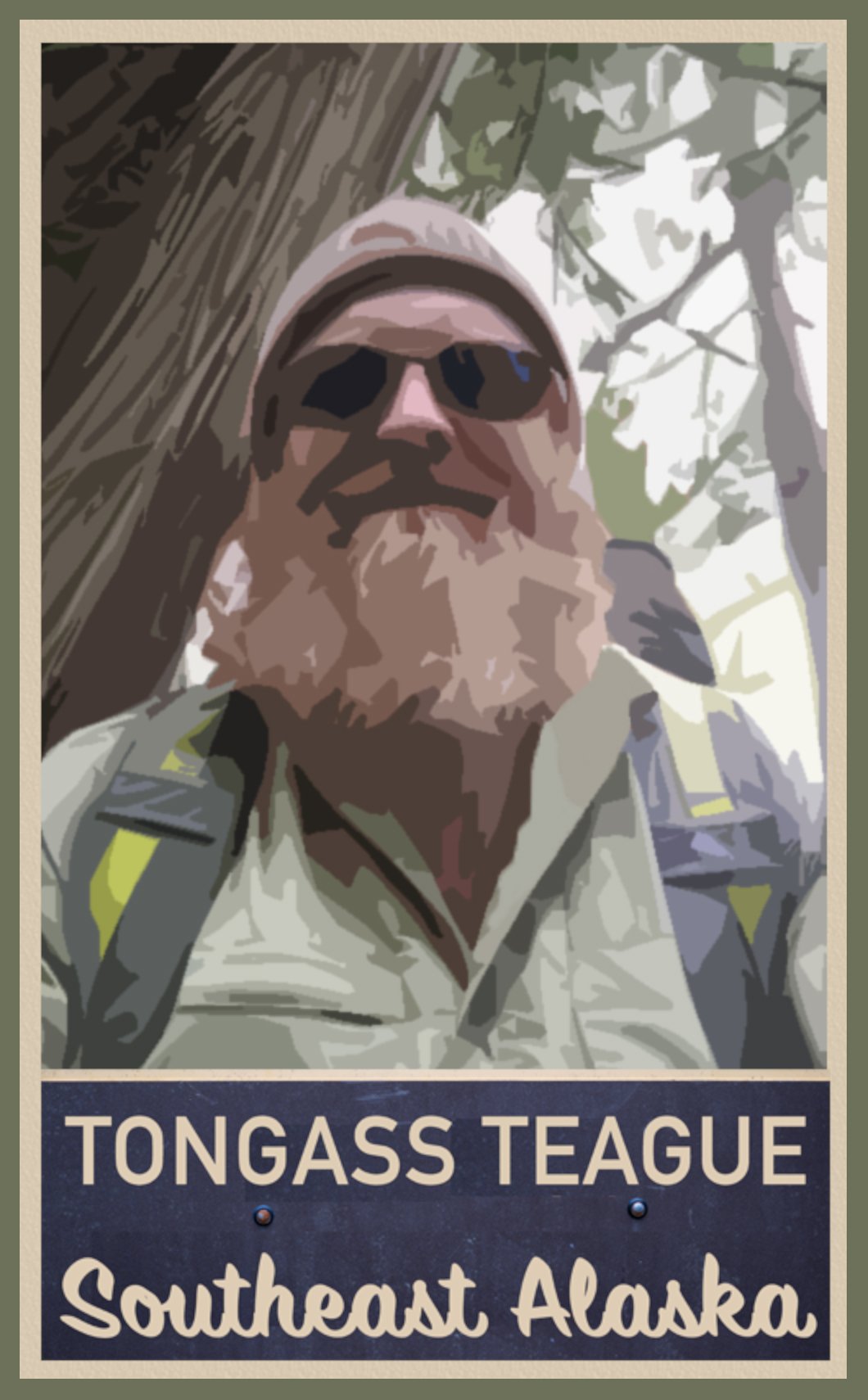Photography by Teague Whalen
4.8 miles one-way (3-4 hours+) • 9.6 miles round-trip (6-8 hour+s) • 1300 feet elevation gain
Directions: From downtown Ketchikan, 18 miles north on Tongass Hwy until it dead-ends at the trailhead.
My first outing with my girlfriend shortly before we began dating was hiking the Lunch Creek Trail on Memorial Day. We had just met the Friday before at our mutual friends’ dinner party. Years later, looking back on that dinner, we wonder if they were trying to set us up, but they deny any intention of that. After the dinner, I felt I had to ask her out soon in order to better establish a connection because I was off to Boulder, Colorado for a week beginning the following weekend. The Lunch Creek Trail’s ten-mile round-trip to Lake Emery Tobin became my perfect excuse to spend a day together getting to know one another better.
What’s nice about the Lunch Creek Trail is that it is all the way out north where the road dead-ends and is absent of homes and motorized traffic, except for the quite turn-off of Settler’s Cove Campground, where Lunch Creek pours into the Pacific Ocean. The Lunch Creek trailhead swings to the right. If one goes left, the trail will lead them to a waterfall platform and down to the ocean and will join The Lunch Falls Trail, if taken to the right, which is approximately a 0.5-mile loop. But Lunch Creek Trail follows along Lunch Creek up a stunning ladder of waterfalls right away. Some of my favorite ancient trees stand guard on this trail—western red cedar, hemlock, and Sitka spruce so large that I often feel in the presence of elders when I pass beneath their thick branches of eternal green.
Once the stairs are climbed not far into the hike, the gravel trail levels out for a while as it traverses land owned by the Alaska State Parks. About a mile in, the trail resorts to dirt, roots, and stones when entering the Tongass National Forest at a nice sandy river bend where a sign warns us that we are in bear country. Others think there are more than bears to be aware of, especially out on Lunch Creek Trail. Once I hiked this trail with a man who tried communicating with Big Foot by whacking a large stick against a spruce in choppy patterns, and we listened for any knocking responses off in the distance. I didn’t hear any. But one time coming back from the long hike with another friend as the evening began to darken in late winter, when I thought the bears were hibernating, we heard a low, spooky moan of a very large animal echo through the river valley.
Continuing up the valley, the trail becomes boardwalk over a couple muskeg sections, where one can see the towering ridge on the other side of the river, then begins to climb into the forested hillside away from the river, crosses some small streams, and eventually comes back down to walk along the riverside once again. Next the trail crosses a bridge to the other side of the river for the first time. Boardwalk steps begin the more serious elevation gain now, which soon leads to an intimate perch beside a waterfall. Here I’ve seen American dippers repeatedly dive into the rapids to feed and pop back out onto rocks. This is a nice place for lunch and rehydration and where one can refill a water bottle if equipped with a proper backcountry water filter or water-treatment system.
The trail continues to climb alternating between boardwalk steps, a rooty dirt trail, and sometimes muddy holes, which lead to a level boardwalk across a muskeg field. Eventually the boardwalk leaves off to just muddy footprints trammeled through forested muskeg lanes, climbing onward until one ends up at the headwaters of Lunch Creek—the shores of Lake Emery Tobin, which is surrounded by a rim of steep mountainsides often capped with snow ridges and peaks. My about-to-be girlfriend and I arrived at the lake after the last stretches of muskeg and found the lakeshore still covered in snow late in May. We pulled out our rain pants from our packs and spread them on the ground so we could have a dry place to sit. Then we tugged on our fleece jackets and winter hats and shared cups of green tea as we talked deeper about our histories and past relationships. Soon we became more comfortable with the space between our words and stories, more comfortable with the ringing meditative silence that the snowy peaks and rainforest continually emanated until we felt we no longer had to say anything at that moment and could just be together. The lake all to ourselves, we quietly sipped tea and watched our breath, happy to be alive and sharing this idyllic and peaceful place. Such an auspicious beginning to our budding friendship then, and now several years later, though we have since parted ways, that hike will always be a significant marker of how far we’ve come with our continued friendship, occasionally making sure to revitalize with tall drinks of wilderness in order to still cultivate healthy space and time for one another so that we may remain lifelong friends.






